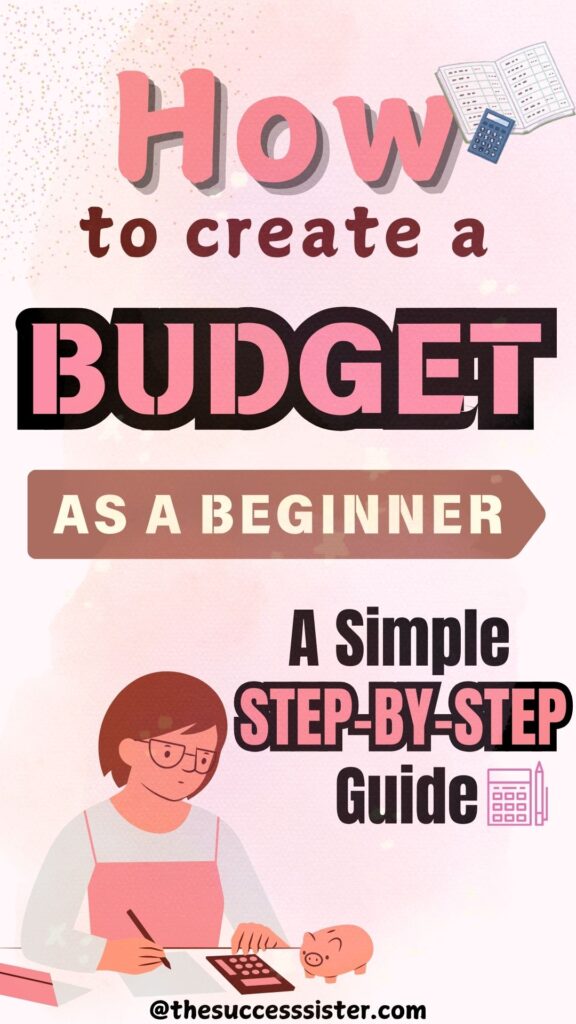
When you hear the word ‘budget,’ does it make you think of sacrifices and boring spreadsheets? I get it—that used to be me too!
I used to think it was all fancy and you don’t really need it.
But,
When I started reading finance books and educating myself about Money, I was like, “Dude, no one teaches us this — The real things that matter in life.”
Reading these books shaped my mindset in such a unique way, and I thank God for that.
Do you know why Budgeting matters?
Let me tell you why!
The first rule of money is : Make it work for you, not the other way around.
And that’s exactly what budgeting does—it gives you the power to decide where your money goes and how much you’ll spend on specific things. It’s the opposite of mindlessly spending money on anything you want, whenever you want.
Budgeting will help you achieve your financial goals and live life on your terms. It’s simply about planning where your money will go and how much you’ll spend. That’s it—no complicated rules, no stress. The truth is, without a plan, it’s tough to make progress in any area of your life.
It doesn’t matter if you’re a beginner at budgeting or already following a budgeting rule—this post will definitely offer you something valuable. Plus, budgeting won’t feel scary or overwhelming anymore!
Here are some easy steps to create a budget that won’t leave you feeling overwhelmed and will help you achieve a financially stress-free life.
Steps to Create a Budget:
Grab a notepad and pen—you’re about to take control of your finances!
Step 1 – Gather Your Income
Write down all of your monthly income sources, including your job, any side hustles, and rent you receive—everything. Record every amount of money you receive — leave nothing out!
If you don’t have a fixed income, write down the minimum amount you earn.
Step 2 – List your expenses
Now that you’ve figured out your income, it’s time to take a closer look at where your money is going.
Start by gathering your monthly bills, bank statements, and online transactions. Then, make a list of all your expenses and categorize them into two groups: Fixed and Variable.
Fixed expenses are those that occur monthly in a fixed amount, such as rent, mortgage, and transportation.
Variable expenses changes from month to month and include items like groceries, shopping, subscriptions, and entertainment.

Step 3 – Categorize Your Expenses Again
Once again, go over your expenses and categorize them into three parts: needs, wants, and savings/debt/money left. This is an additional step, and I’ll tell you about it later in the post.
For now, just categorize them.
Step 4 – Check How Much Is Left
Now that you know your income and expenses, it’s time to see how much is left. After subtracting your expenses from your income, you might find one of two situations:
- You are left with money.
If this is the case, Congratulations! You have the opportunity to decide how and where you want to use this money. - You are left with no money — And there could be two reasons for this;
- One reason might be your high variable expenses. In this case, you’ll need to review your spending (variable expenses) and identify areas where you can cut back.
- Or, it might be that you are already investing, saving your money for a specific purpose, or clearing debt, leaving you with nothing left. If this is the case — it’s a good thing because at least you know your goal and are working toward it.
But if you still find yourself struggling financially, it might be time to explore additional income sources. A side hustle could be your ticket to extra money that you can use towards your goals, giving you more flexibility and freedom in managing your finances.
Recommend Post – 11 Realistic Ways to Save Money for a Stress-Free Financial Life

Step 5 – What Goals Do You Want to Achieve?
Since you’ve got money, take a moment to reflect and ask yourself: What are your goals? What do you want to achieve with this money? For what purpose do you want to use it?
Do you have a debt to pay? Do you want to build an emergency fund, save for a trip, invest in stocks, or start trading or a business?
Whatever it is, make sure you’re doing it for yourself—not to show off or prove something to others.
Recommend Post – 5 Things You Must Know Before You Start Saving Money
Step 6 – Plan Accordingly
At this point, you know how much money is coming in, how much is going out, what is left, and what your goals are.
Now, you need to decide on a budgeting method that works best for you.
Below, I’ve listed some budgeting methods;
Common Budgeting Methods
1. 50-30-20 Rule – A Simple Way to Manage Your Money
Here’s how it works: Divide your income into three categories: needs, wants, and savings.
Remember, I mentioned earlier about dividing your income into three categories? Here’s why: it gives you a clear idea of how much to allocate for different expenses.
If you’re a beginner, I highly recommend starting with this rule. It’s an easy way to organize your finances. But don’t feel like you have to stick to these exact numbers or categories. Feel free to adjust them based on your situation.
The goal is to allocate your income in a way that allows you to save money while meeting your needs and wants.
However, for this approach to work, you must be disciplined with your spending, and consistent and patient throughout the journey.
Here are a few variations you can try:
- 40% needs, 30% wants, 30% savings
- 50% needs, 20% wants, 30% debt
- 50% needs, 10% wants, 20% debt, 20% savings

2. Zero-Based Budgeting:
In this budgeting system, the idea is to allocate all your money, meaning your income minus expenses should equal zero. Each penny you earn should have a designated purpose.
After assigning funds to your needs, savings, and other priorities, your balance should be zero
3. Envelope Method:
This is also a budgeting technique in which you use either cash or digital envelopes to track your expenses.
You allocate specific a amount to the different categories in which you’ve divided your expenses, and whenever you need to spend on something, you use the cash from the amount you’ve allocated to that category.

Now it’s your turn—start working on your budget today and take the first step toward financial freedom.
